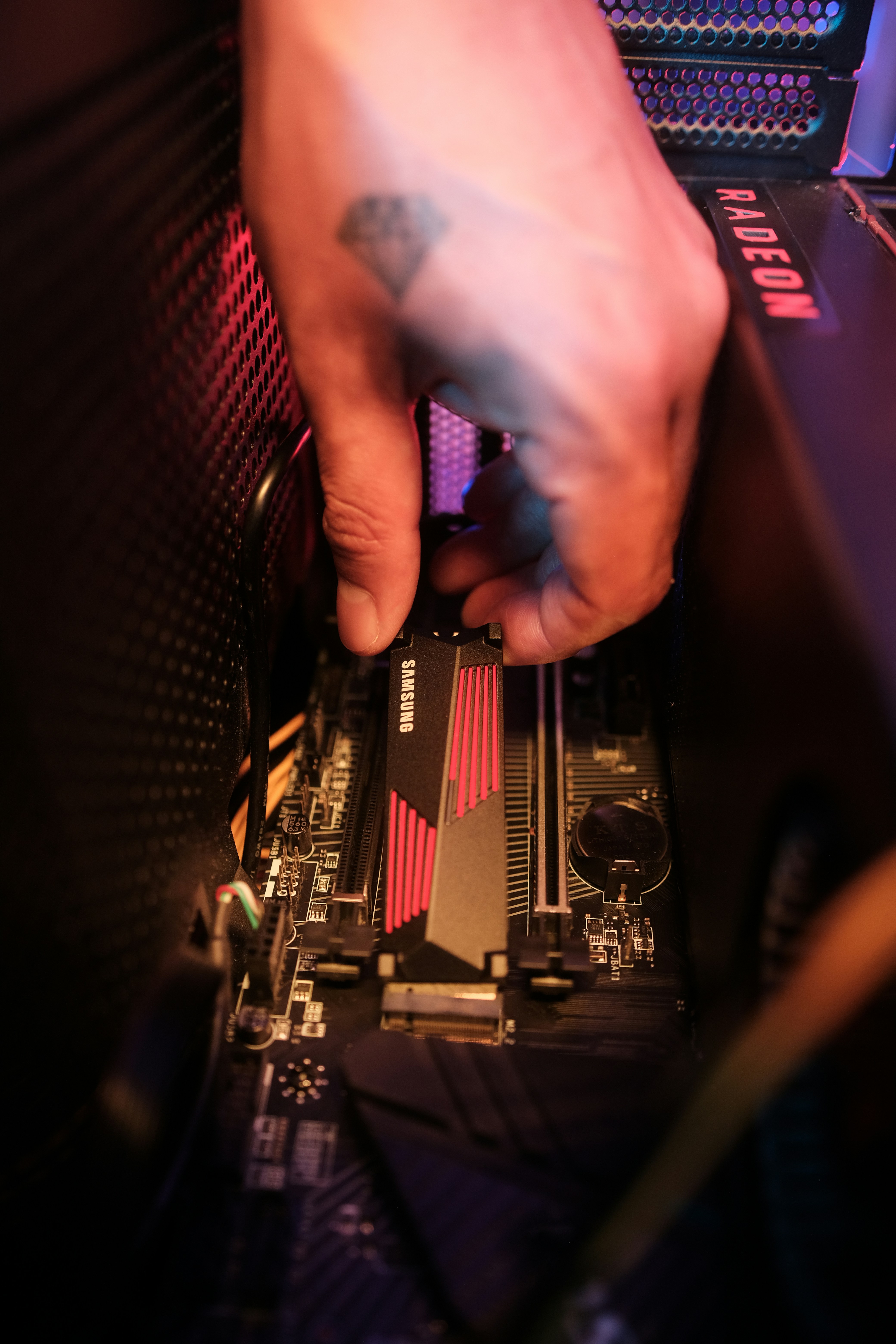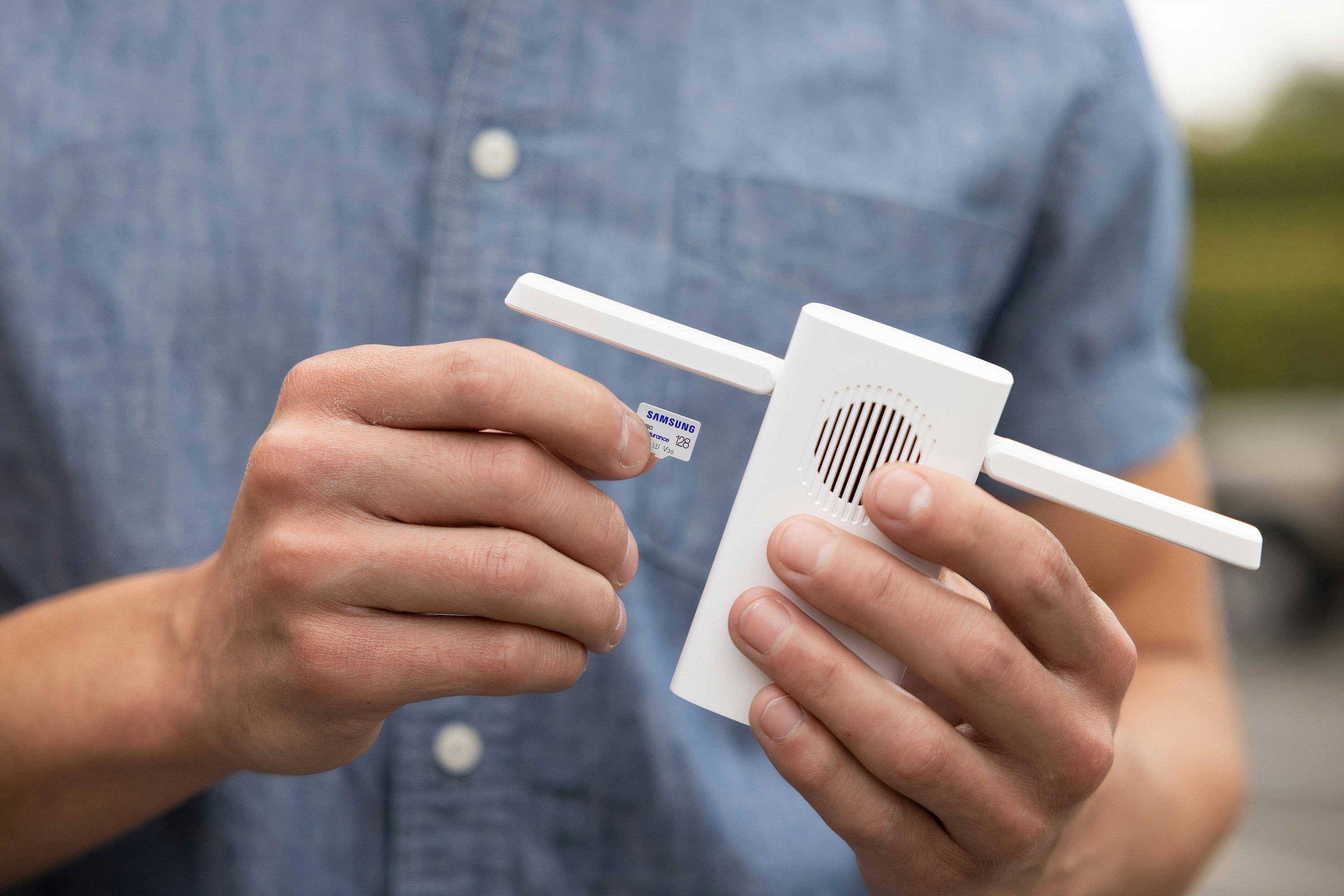Are you looking to upgrade your storage capabilities with a solid-state drive (SSD), but unsure of the installation process? In this article, we will guide you through the steps of upgrading to an SSD for improved storage. From preparing your system to transferring data and installing the new drive, we’ve got you covered. By the end of this article, you’ll have a clear understanding of how to effortlessly upgrade to an SSD and enjoy enhanced storage performance.
Preparation
Before beginning the installation process for your new SSD, there are a few important steps to consider.
Researching Compatible SSDs
To ensure a successful upgrade, it is crucial to research compatible SSD options for your computer. Look for specifications including form factor, interface, and capacity that match your system requirements. Reading reviews and comparing prices can also help you make an informed decision.
Creating a Backup
Before making any changes to your system, it is highly recommended to create a backup of your important files. This will help prevent any data loss in case something goes wrong during the installation process. You can either use an external storage device or cloud services to back up your data.
Gathering Necessary Tools
To install your new SSD, you will need a few tools. Make sure you have a screwdriver set, SATA cables, and any additional mounting brackets if required. Having these tools ready will make the installation process smoother and more efficient.
Physical Installation
Now that you have completed the necessary preparations, it’s time to physically install the SSD into your computer.
Shutting Down and Disconnecting Power
First, shut down your computer and unplug it from the power source. This step is important to ensure your safety and prevent any damages during the installation process.
Opening the Computer Case
Next, you need to open the computer case. The process may vary depending on the type of computer you have. Generally, you will need to remove screws or use a latch to open the case. Refer to your computer’s manual or search online for specific instructions for your model.
Locating and Removing the Old Drive
Once the case is open, locate the old drive you wish to replace. It’s typically a traditional hard disk drive (HDD). Carefully disconnect any cables connected to it, such as the SATA data cable and power cable. Remove any screws or brackets holding the drive in place and slide it out of the drive bay.
Installing the SSD into the Drive Bay
Take your newly purchased SSD and align it with the vacant drive bay. Slide it in gently until it is fully seated. Make sure the SATA connectors are facing towards the back of the computer. If there are any additional mounting brackets, secure them using screws.
Connecting Cables and Securing the SSD
Once the SSD is in place, connect the SATA data cable and power cable to the respective ports on the SSD. Ensure they are securely connected.
Cloning or Fresh Installation
With the physical installation complete, you can now proceed with cloning your existing drive or performing a fresh OS installation on the SSD.
Cloning the Existing Drive (Optional)
If you want to transfer your existing data, operating system, and applications to the new SSD, cloning is an option. This process creates an exact copy of your existing drive onto the SSD. However, it is important to note that this step is optional. If you prefer a fresh installation, you can skip this section.
Using a Cloning Software
To clone your existing drive, you will need cloning software. There are various free and paid options available, such as Acronis True Image, Macrium Reflect, or Clonezilla. Follow the instructions provided by the software to clone your drive onto the SSD.
Transferring Data to the SSD
Once the cloning process is complete, you will have an exact copy of your existing drive on the SSD. Double-check that everything transferred correctly before proceeding.
Performing a Fresh OS Installation (Alternative)
If you prefer a fresh start, you can install a new operating system (OS) directly onto the SSD. This involves booting your computer from a bootable USB or DVD containing the OS installation files. Follow the on-screen instructions to install the OS onto the SSD.
BIOS and UEFI Settings
After the cloning or fresh OS installation, you may need to make some adjustments in the BIOS or UEFI settings to ensure proper functioning of your new SSD.
Accessing BIOS/UEFI Settings
To access the BIOS or UEFI settings, restart your computer and repeatedly press the designated key during the boot process. Common keys include F2, Del, or Esc. Consult your computer’s manual or search online for the specific key for your system.
Changing Boot Order
In the BIOS or UEFI settings, navigate to the boot menu and change the boot order so that the SSD is the first device on the list. This will ensure that your computer boots from the SSD instead of the old drive.
Enabling AHCI Mode (if required)
Some SSDs require the Advanced Host Controller Interface (AHCI) mode for optimal performance. In the BIOS or UEFI settings, find the SATA Configuration or similar option and set it to AHCI. This step may not be necessary for all systems, so consult the SSD manufacturer’s documentation for guidance.
System Configuration and Optimization
With the SSD installed and the necessary settings adjusted, it’s time to configure and optimize your system for the best performance.
Booting from the SSD
Restart your computer and ensure that it boots from the SSD by checking the startup screen or accessing the BIOS/UEFI settings again.
Verifying Drive Recognition
Once your computer has booted, verify that the SSD is recognized by the system. You can do this by checking the Device Manager in Windows or using disk management utilities in other operating systems.
Updating SSD Firmware (if necessary)
It’s a good practice to check for and install any available firmware updates for your SSD. Visit the manufacturer’s website and download the latest firmware version. Follow the provided instructions to update the firmware. This step can help improve stability, compatibility, and performance.
Enabling TRIM Command for SSD
TRIM is a command that helps optimize SSD performance over time by clearing unused data blocks. In most cases, the operating system will automatically enable TRIM for SSDs. However, it’s a good idea to verify that it is indeed enabled. In Windows, you can do this by opening the Command Prompt and entering the command “fsutil behavior query DisableDeleteNotify”. If the result is 0, TRIM is enabled.
Disabling Disk Defragmentation
SSDs do not require disk defragmentation like traditional hard drives. In fact, defragmenting an SSD can actually reduce its lifespan. Make sure to disable any automatic disk defragmentation scheduled tasks in your operating system settings.
Post-Installation Steps
After configuring your system for optimal performance, there are a few post-installation steps to consider.

Verifying System Stability
To ensure that your system is stable and functioning properly with the new SSD, run various software programs and perform typical tasks to test its stability. Pay attention to any unusual behavior or errors that may indicate a problem.
Formatting or Repurposing the Old Drive
Since you have replaced the old drive with the new SSD, you can now format the old drive or repurpose it for other uses. Formatting will erase all data, so make sure you have backed up any important files beforehand.
Testing SSD Performance
To see the full benefit of your new SSD, you can run benchmarking software to test its performance. These tests assess the speed and responsiveness of the SSD, providing valuable information about its capabilities.
Reinstalling Software and Restoring Files
If you performed a fresh OS installation, you will need to reinstall your software applications and restore your files from the backup you created earlier. Follow the installation instructions for each software and copy your files back to their respective locations.
Securing and Disposing of Old Drive
If you no longer need the old drive, it is essential to secure it properly before disposing of it. Use software to wipe all data from the drive or physically destroy it to prevent any potential data breaches.
Troubleshooting
Sometimes, issues may arise during or after the installation process. Here are some common problems and their potential solutions.

SSD Not Detected
If your SSD is not being detected by the system, double-check all connections and ensure that the SSD is properly seated in the drive bay. Also, verify that the SATA ports on your motherboard are working correctly.
Boot Issues
If you experience boot issues after installing the SSD, make sure the boot order is set correctly in the BIOS or UEFI settings. Additionally, ensure that the cloned or installed OS on the SSD is properly configured.
Driver and Firmware Problems
If you encounter driver or firmware problems with your SSD, visit the manufacturer’s website and download the latest drivers and firmware updates. Installing these updates can help resolve compatibility issues and improve performance.
Incompatibility or Data Corruption
In some cases, an SSD may be incompatible with your system or may cause data corruption. If you encounter such issues, consider reaching out to the SSD manufacturer’s support or seeking help from professional technicians.
Seeking Professional Assistance
If you are unsure about any step in the installation process or encounter persistent issues that you are unable to resolve, it is advisable to seek assistance from professional technicians. They have the expertise and tools necessary to diagnose and fix any problems.
Advantages of SSD Upgrades
Upgrading to an SSD offers several advantages over traditional hard drives. Here are some key benefits you can expect.
Improved Boot Times
One of the major advantages of an SSD is significantly improved boot times. With faster read and write speeds, your computer will start up much quicker, allowing you to get to work or play faster.
Faster Application Loading
Applications and files stored on an SSD load much faster compared to a traditional hard drive. This means faster response times when launching software and browsing files.
Reduced File Access Latency
SSDs have almost no seek time, resulting in reduced file access latency. This means that your computer can retrieve data from the SSD much faster, resulting in a smoother and more responsive user experience.
Enhanced Overall System Performance
With faster boot times, quicker application loading, and reduced file access latency, upgrading to an SSD can significantly enhance the overall performance of your system. You will notice a snappier and more enjoyable computing experience.
Considerations and Limitations
While there are numerous benefits to upgrading to an SSD, it is important to keep the following considerations and limitations in mind.
Checking System Compatibility
Before purchasing an SSD, verify that it is compatible with your system’s interface and form factor. Additionally, ensure that your computer’s BIOS or UEFI supports booting from SSDs.
Available Storage Space
SSDs generally offer smaller storage capacities compared to traditional hard drives. Make sure you have enough storage space for your needs before making the switch. Consider external storage options if you require additional space.
Cost and Budgeting
SSDs tend to be more expensive than traditional hard drives, especially when considering higher capacities. It is important to factor in the cost and budget accordingly before investing in an SSD.
SSD Lifespan and Endurance
While modern SSDs have improved durability compared to older models, they have a limited lifespan based on their write endurance. It is worth considering the workload and usage patterns before choosing an SSD.
Further Expansion and RAID Configurations
If you anticipate the need for additional storage space or want to set up RAID configurations, check if your system supports such expansions or configurations before purchasing an SSD.
Conclusion
Upgrading to an SSD is an excellent way to boost your system’s performance, reduce loading times, and improve overall user experience. By following the steps outlined in this article, you can successfully install and configure your new SSD, ensuring optimal performance. With improved boot times, faster application loading, and reduced file access latency, you’ll enjoy a snappier and more responsive computing experience. Just remember to research compatible SSDs, create a backup, and gather the necessary tools before diving into the installation process. Happy upgrading!



